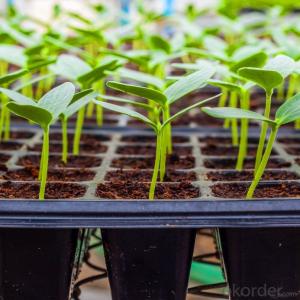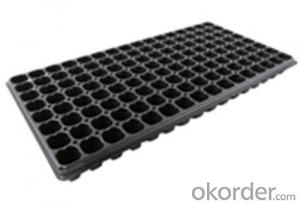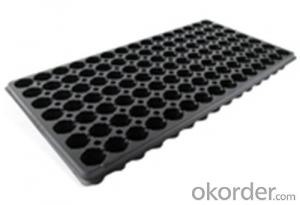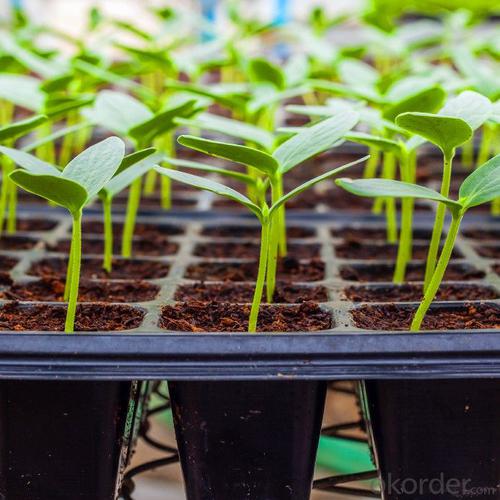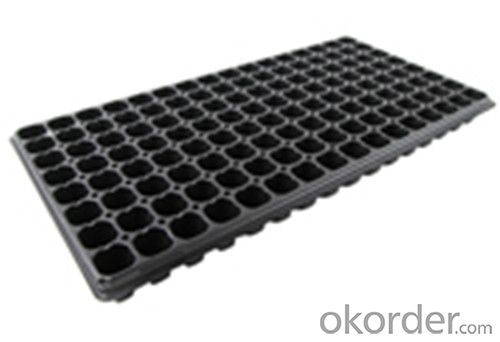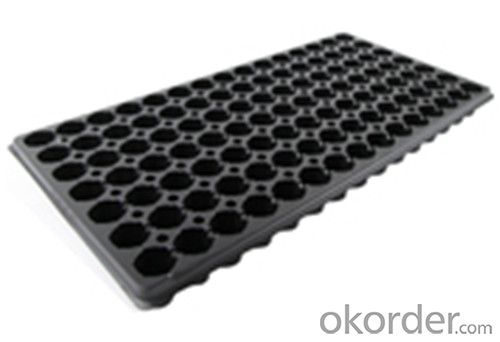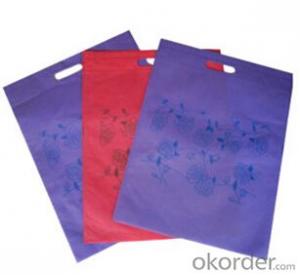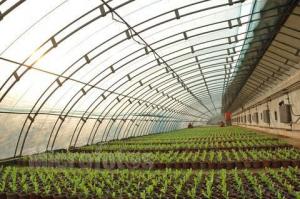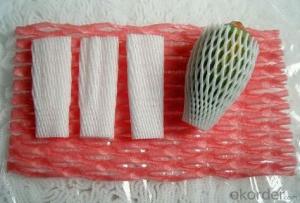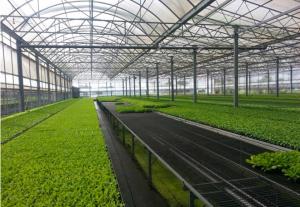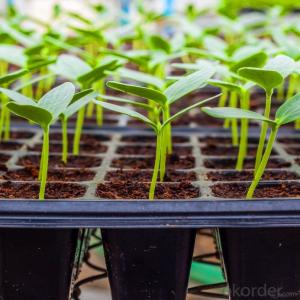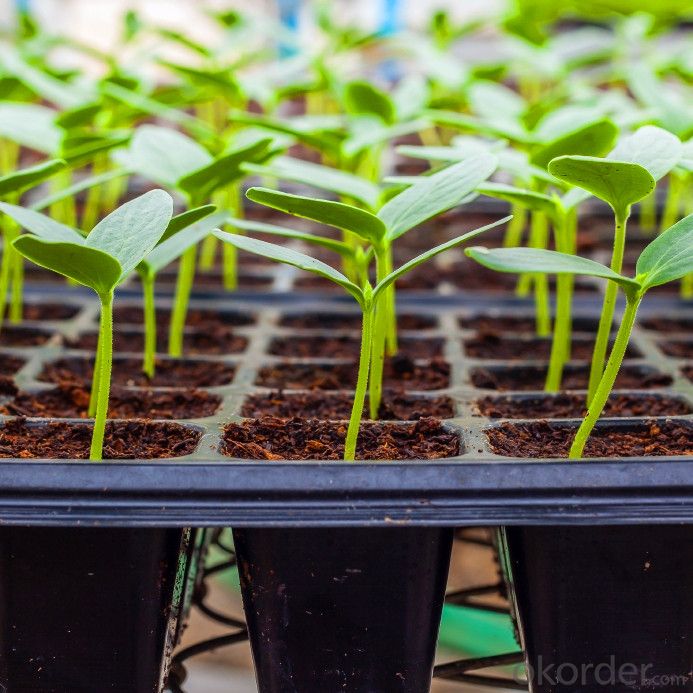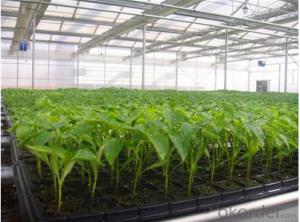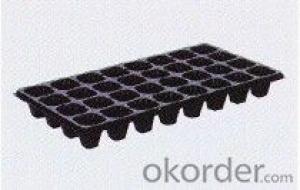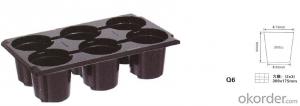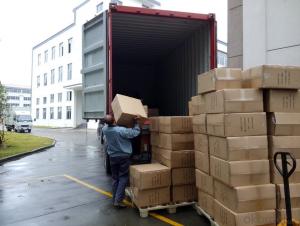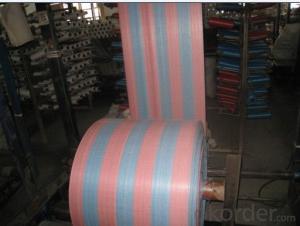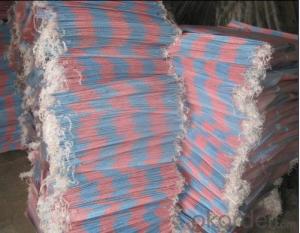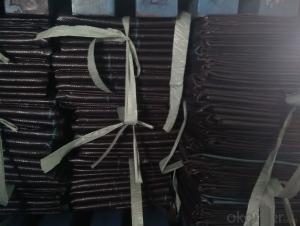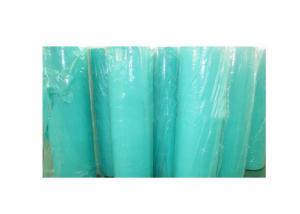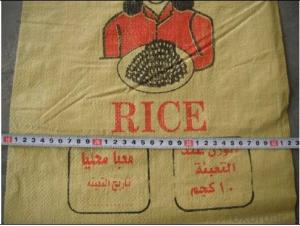Plastic Seedling tray Plastic Nursery Seeding Tray Seed Plant
- Loading Port:
- China main port
- Payment Terms:
- TT OR LC
- Min Order Qty:
- 1000 pc
- Supply Capability:
- 10000000 pc/month
OKorder Service Pledge
OKorder Financial Service
You Might Also Like
Structure of the seed tray: · Top quality and competitive price. · Variety design and good appearance. · Easy to use, and remove. · Durable and reusable. · Eco-Friendly.
Advantages: · Top quality and competitive price. · Variety design and good appearance. · Easy to use, and remove. · Durable and reusable. · Eco-Friendly.
Application: · Ideal for Starting seeds and Transplanting Seedling. · Suitable for both manual and automatic planting. · Suitable for Propagating Vegetables, Flowers and other plant from seed · in green-house or indoors.
Description Main Features of the seed tray: · Ideal for Starting seeds and Transplanting Seedling. · Suitable for both manual and automatic planting. · Suitable for Propagating Vegetables, Flowers and other plant from seed in green-house or indoors. Using time: · thickness of 0.5mm can be used 1 to 2 times. · thickness of 0.6mm can be used 3 to 4 times. · thickness of 0.7mm can be used 5 to 6 times. · thickness of 0.8mm can be used 7 to 8 times. · thickness of 0.9mm can be used 8 to 9 times. · thickness of 1.0mm can be used 8 to 10 times. Thickness vs. Weight: · Thickness of trays are from 0.5mm to 1.0mm. · 1.0mm: 155g±5g; 100pcs/ctn. · 0.9mm: 140g±5g; 120pcs/ctn. · 0.7mm: 110g±5g; 150pcs/ctn. · 0.6mm: 95g±5g; 180pcs/ctn. · 0.5mm: 80g±5g; 200pcs/ctn.
Seed Tray Specification: Materialps/pvcThickness0.5mm-1.5mm, standard:1mmWeight80g(±5)g-230g(±5)g, Standard weight:155g(±5)gSizelength:490mm-540mm, width:190mm-345mm,depth:25mm-150mm Standard:54mmX28mmCell count18-512Packagein cartonUsing time8-10 times
FAQ: Q:How Can I Get A Sample? A:You can get samples by communicate with our export sales. Q:How Long Is Delivery? A:Delivery time will be 7-25 days according to order quantity. Q:What Is The MOQ? A:Our MOQ is 1*20FT container quantity, allow to mix several items. Q:What Is Our Normal Payments Terms? A:Our normal payment terms now is T/T, L/C or Western Union,Papal. Q:How Do I Order Your Products? A:You can check our website for any items you interest and you can also get communication with our export sales and order for it accordingly. Q:What Kinds Of Material We Use In Our Product? A:Our plastic flower pots use material such as PP polymer or PE polymer.
|
- Q: What are the different types of silage covers available?
- There are several types of silage covers available, including oxygen barrier films, oxygen-limiting barriers, polyethylene covers, and tarpaulins. Oxygen barrier films are impermeable to oxygen and help preserve the quality of silage by reducing spoilage. Oxygen-limiting barriers are similar, but allow for some gas exchange to maintain optimal fermentation. Polyethylene covers are commonly used and provide a physical barrier to protect the silage from exposure to air, rain, and pests. Tarpaulins are heavy-duty covers that offer protection against external elements and can be easily removed and reused.
- Q: Can ground cover be used to attract butterflies?
- Yes, ground cover can be used to attract butterflies. Certain plants, like clover, thyme, and creeping phlox, provide nectar and host plants for butterflies, making them an ideal choice for ground cover. By selecting the right plants, you can create a butterfly-friendly habitat and attract these beautiful creatures to your garden.
- Q: How are plastic poultry crates used in the poultry industry?
- Plastic poultry crates are widely used in the poultry industry to transport and house chickens. These crates provide a safe and secure environment for the birds during transportation, ensuring minimal stress and injury. Additionally, they are stackable and easy to handle, allowing for efficient handling and storage. The crates are also used in poultry farms as temporary housing for chickens during cleaning or when separating sick or injured birds from the flock. Overall, plastic poultry crates play a crucial role in maintaining the welfare and productivity of poultry in the industry.
- Q: I have the lg env3 and I'm looking for a cover. I'm wondering whether i should get a silicon or a snap-on plastic cover.? Which protects the phone better if it gets dropped? Thanks!
- plastic will protect it better if dropped because he plastic will crack before the phone, silicon is just soft and a drop could possibly still crack it because the silicone won't take the damage. However, if you don't want to add a lot of size to your phone the silicone is best. So, if you don't care about size and only want protection, get plastic. If you want a little bit of protection and not much of a size difference, get silicone
- Q: Because I heard some plastic types just release a bad gas and char...but I will be melting them with a heat gun if that makes any different...just blows hot air
- Although all plastic is fundamentally the same, plastic is made by adding different chemicals together to come up with a compound of those chemicals. The use of the plastic would determine which receipt of chemicals to use to obtain the attributes you want for the finished product. Short answer, you'd have to know what was the intended use of the plastic you want to melt, to know if would be appropriate for your needs.
- Q: Can ground cover be used to create a natural pathway?
- Yes, ground cover can be used to create a natural pathway. Ground cover plants, such as low-growing grasses, mosses, or creeping thyme, can be planted to cover the ground and provide a natural and visually appealing pathway. These plants can help prevent erosion, reduce weed growth, and create a soft and comfortable walking surface.
- Q: How do you prevent ground cover plants from spreading into garden beds?
- One effective way to prevent ground cover plants from spreading into garden beds is by creating a physical barrier, such as installing edging or using landscape fabric. Additionally, regular maintenance practices like pruning, trimming, and removing any unwanted runners can help control their spread.
- Q: Are nursery trays suitable for vertical gardening?
- No, nursery trays are not suitable for vertical gardening as they are designed for horizontal planting and lack the structural support needed for vertical setups.
- Q: In what year did Plastic Bags become a severe problem to the environment?
- why do you think they're a problem? They're convenient, light weight, clean, and strong. 100 of them take up less space in a landfill than a milk carton/jug. They are NOT the problem in the oceans. The problem there is plastic fishnets that have been lost by fishing boats. The nets ARE a problem, since they float and continue to catch and trap anything that goes into them. Testing has found that reusuable environmentally friendly cloth bags, used as replacements for plastic bags, soon build up high levels of bacteria as they are reused, so they need to be washed frequently which requires lots of water and detergent. In addition, at a cost of up to $5 each, buying and storing enough of them at home to handle a single trip to the grocery store can get prohibitively expensive for poor families who may use up to 20 plastic bags each trip to market to haul their groceries home. As for a year that plastic bags became a problem....it was the year immediately after plastic was touted as the salvation of the trees chopped down to create paper bags for grocery stores. Never let an environmentalist tell you what to switch to. It'll never be good enough. Just like all the environmental lawsuits now showing up in courts to stop clean energy projects (dams, windmills, solar arrays, geothermal, etc). All they want is for everyone to die and leave the planet to the frickin animals, because surely everyone can see that humans are a blight on the planet and should never have evolved.
- Q: How do you choose ground cover for a water-wise garden?
- When choosing ground cover for a water-wise garden, it is important to consider plants that are drought-tolerant and have low water requirements. Look for native or adapted species that can thrive in your specific climate and soil conditions. Opt for plants that have deep root systems to better access water from the ground. Additionally, choose ground cover that can help with water retention and minimize evaporation, such as mulch or gravel.
Send your message to us
Plastic Seedling tray Plastic Nursery Seeding Tray Seed Plant
- Loading Port:
- China main port
- Payment Terms:
- TT OR LC
- Min Order Qty:
- 1000 pc
- Supply Capability:
- 10000000 pc/month
OKorder Service Pledge
OKorder Financial Service
Similar products
Hot products
Hot Searches
Related keywords
